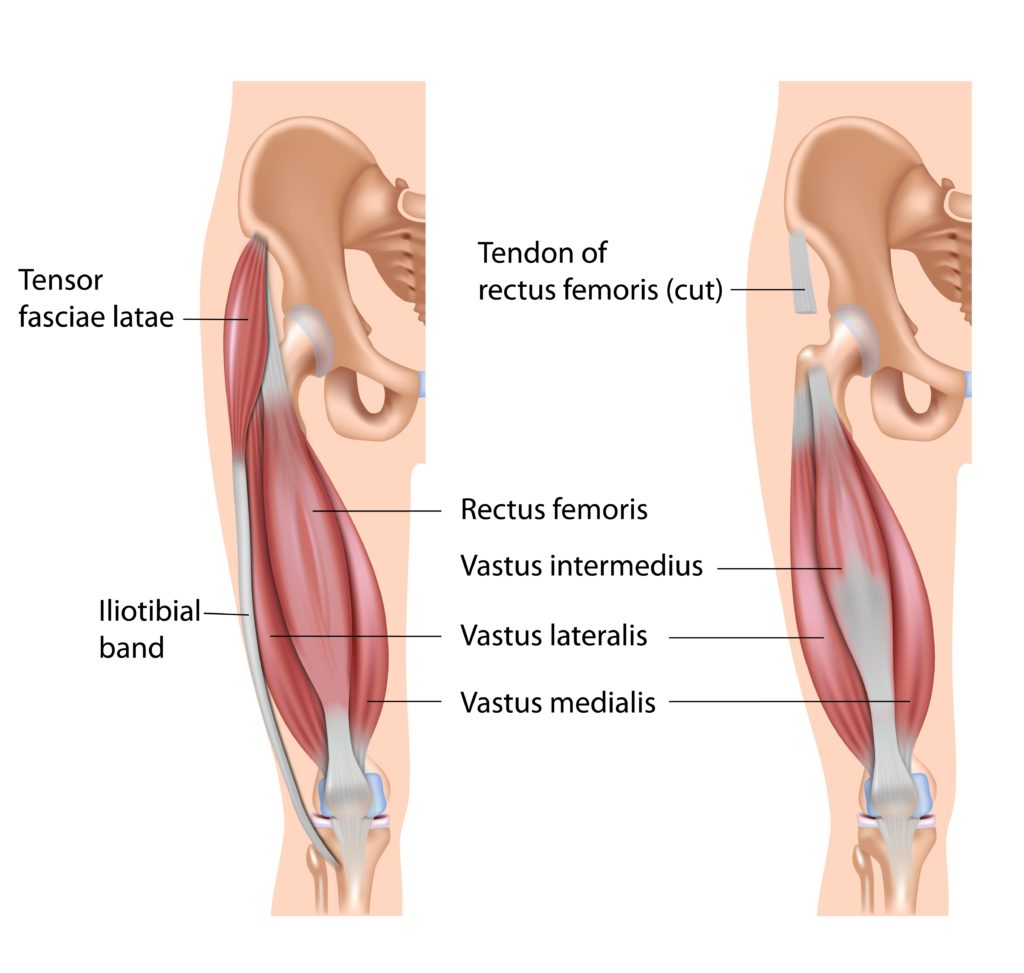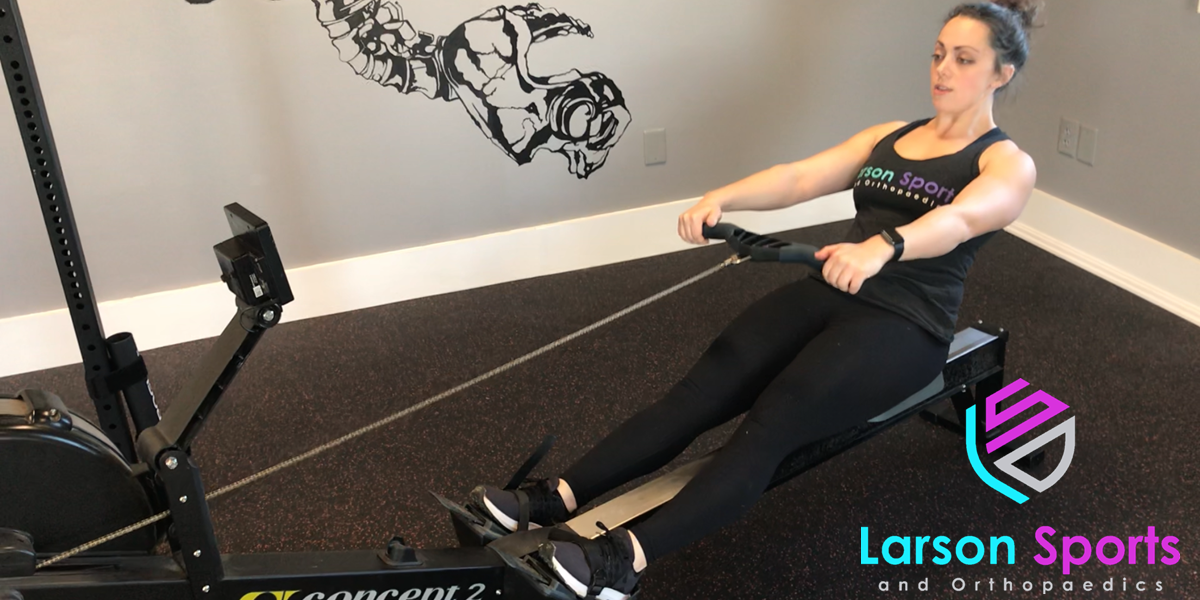Rowing is a fantastic full-body exercise. And it’s widely incorporated into the workouts of many affiliates and independent gyms due to its combination of strength and cardiovascular training. Of course, like any intense exercise some people love it, some people hate it, and some just love to hate.
But no matter whether they love rowing or hate it, a lot of people ask me why their hip hurts when they row. This is a problem that doesn’t usually make people stop rowing entirely. But it can be an annoyance, something that prevents them from rowing easily or as often as they’d like. And it’s very common in people who are new to rowing or trying to increase their rowing volume.
My Hip Hurts When I’m Rowing
Most people that get hip pain while rowing feel it deep in the front hip just below the belt line. People describe it as a dull burn or a sharp ache. It usually starts hurting after they’ve been rowing for a few minutes.
However, if this problem has been building over some time, the pain may start right away. Sometimes the pain will be severe enough that people can’t row at all or have to greatly reduce their intensity on the erg.

What Causes Pain when Using a Rowing Machine?
The most common cause of hip pain while rowing is overuse of the hip flexor muscles. The area most commonly affected is the tendon at the top of the rectus femoris, one of the quadriceps muscles. This muscle attaches to the pelvis at the front of the hip. It helps to flex the hip, meaning that it brings your knee towards your chest.
The rectus femoris and other hip flexor muscles get quite a workout when using a rowing machine. They have to slow you down at the end of the pull. And then they have to bring you back to your starting position every time.
These hip flexor muscles lead a fairly lazy existence normally. They barely have to activate when they swing your leg forward with every step. Maybe you get really crazy and do a few stairs once in a while! But other than that, they just kinda snooze the day away like a cat in a sunbeam.
And they can be easily irritated when forced into actual exercise. Little surprise then that after 100s of strokes on a rower, they get overworked and develop significant tendinitis.
How to Fix Hip Pain while Rowing?
As with any tendinitis, it is typically a sign of overuse. Sometimes you can work through it. But this pain is your body’s way of saying your tendon can’t keep up with daily repair needed after exercise. It’s your body’s way of telling you to slow down.
So how to fix hip pain when you are rowing? The first step is to decrease the distance you row each week. The second step is to work on stretching these muscles and tendons in the front of your hip. And the third is to change the WAY that you row.
Fix Hip Pain: Decrease Distance
As we’ve discussed before in this blog, tendinitis is a product of overuse. As my friend Scott Dolly likes to say “You don’t fall down and catch a tendinitis. You gotta work at that!” So the primary thing you have to do is stop beating it up.
That means decreasing the stress you put on the injured area. Less rowing means less tendon damage. Because your body can’t heal tendons as quickly as it can heal muscles, so you need to give your healing mechanisms a chance to catch up.
Fix Hip Pain: Unhook Your Feet
This is actually a tip I heard from Lauren, a nurse in our hospital who also works out at a local gym. She was having some hip pain while rowing. And after we discussed her symptoms and the problem, she went back to the gym and made some changes. The next time I saw her, she had a tip for me.
She told me that unhooking her feet from the cross strap greatly reduced her hip pain while rowing. As I asked around, I found that there were more than a few coaches that knew this trick. It seems that this little tip had circulated its way through several of the boxes and gyms in our area. So I started to think about WHY it might work. After talking it over with Coach Jess, we came up with a few ideas as to how this works.
Mechanics of Unhooking Your Feet
Why would unstrapping your feet help reduce hip pain while rowing so much? We soon realized it has to do with the biomechanics; unstrapping your feet changes how you row and what muscles are used.
First, we realized that you don’t use the foot straps, you can’t push as hard or else you run the risk of shooting yourself right off the back of the machine. Since your pull is more controlled you don’t have to use your hip flexors to slow down at the end of the pull; this leads to less strain on the hip flexor tendons and less pain!
Second, you can’t use your hip flexor muscles to reset to the starting position. You need to dig your heels into the stirrups and use your hamstrings to bend at the knee and get back to the start. So you are shifting the work away from the chronically overused muscles and onto others, making it a more balanced motion.
Fix Hip Pain: Slow Your Roll
Efficiency is the name of the game when it comes to rowing, especially when you are doing any significant distance. We found that many of the changes you make naturally when your feet are unstrapped are exactly the changes that make your stroke more efficient. So you can think of the footstrap trick as a training tool for improved rowing form.
When rowing you want to be sure you are driving through your heels, not coming up on the toes at the end.
Your pull should be a steady acceleration through the end rather than a forceful jerk; your feet shouldn’t be coming off their platforms at the end of the pull.
Your reset should be to a comfortable position; too many people scrunch down as far as their hips and knees will go with their back curved over to reach all the way forward. That’s neither efficient nor comfortable!
As you’ll see in the video that accompanies this article, rowing without strapping your feet down essentially forces you to do all of these things. So use that as a good training tool for better form. Just don’t fall into your bad habits when you get back in the foot straps!

